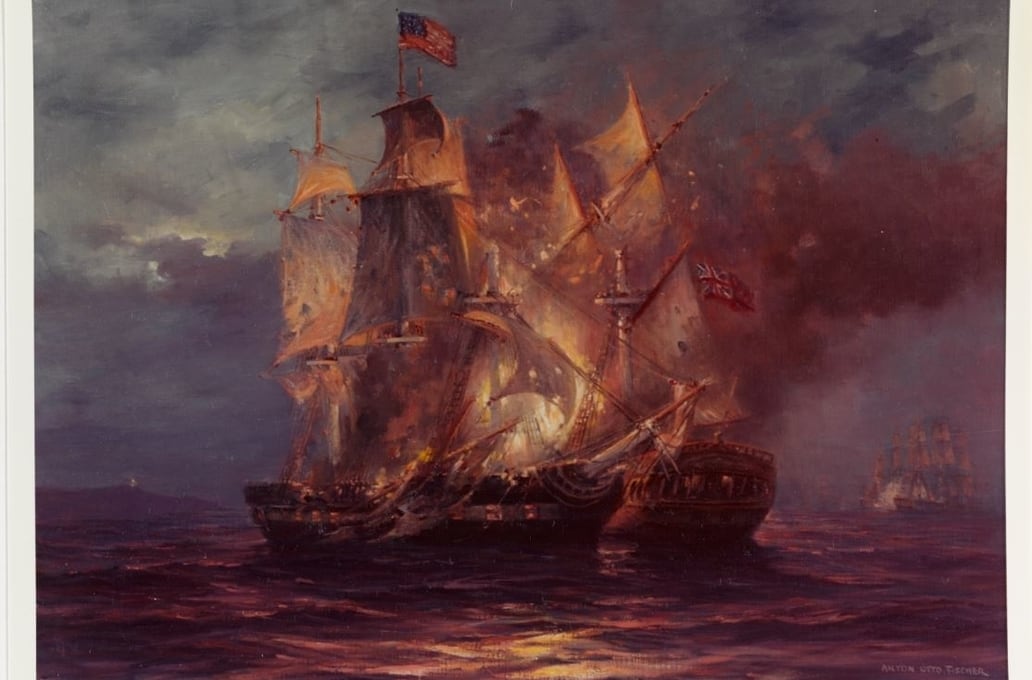John Paul Jones is best known as a warrior, a tough commander who repeatedly beat the odds in one of history’s bloodiest scenarios: single-ship combat in the Age of Sail. His career is a stirring sea saga involving courage, audacity and a commitment to the American struggle for liberty.
But there was much more to Jones than iron determination and courage under fire.
He also was a visionary, a naval officer who thought in broad strategic terms. Arguably the most important strategic concept Jones seized upon was that of global power projection. In his words and deeds, he made it a crucial part of American naval planning during the War of Independence, and it remains an influential part of U.S. military strategy.
Jones also foresaw the crucial role naval power would play in America’s future. In fact, he predicted it outright in a letter to his friend Thomas Bell, captain of an American privateer.
Bell had written Jones in 1778 of the bleak state of affairs in Philadelphia and within the Continental Navy.
Jones responded: “Let us not altogether despond. Tho’ I am no prophet, the one will become the first city, and the other the first Navy within a much shorter space of time than is generally imagined.… Our Marine will rise as if by enchantment and become, within the memory of persons now living, the wonder and envy of the world.”
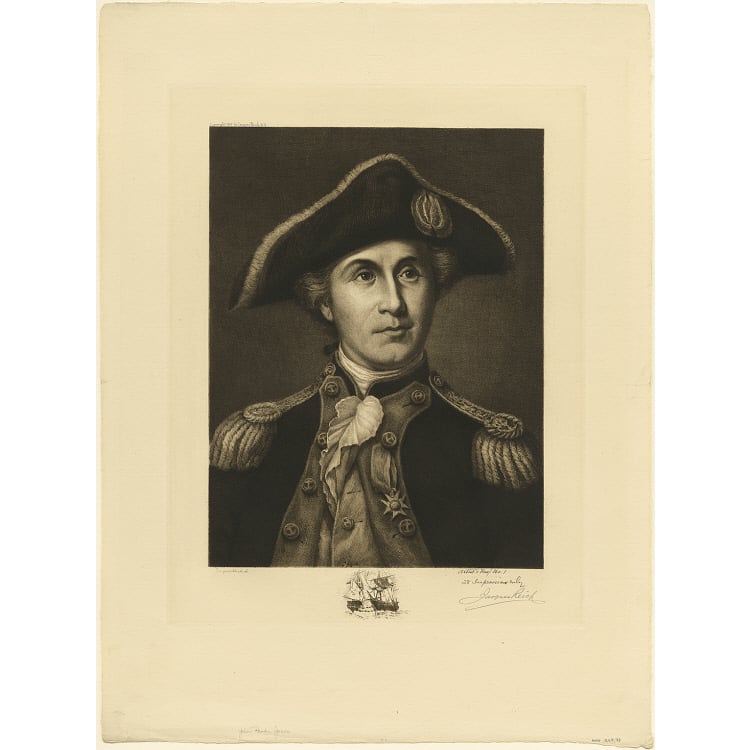
The timing of Jones’ vision may have been a bit off, but he was dead-on concerning the rise of the U.S. Navy.
The Continental Navy was an improbable setting for the kind of long-range strategic perspective Jones demonstrated during his career.
It was a makeshift force, started without a single purpose-built warship, that often found itself blockaded in its own ports. When it did confront its opposite numbers in the Royal Navy at sea, it consistently lost.
Its officer corps comprised men with little or no professional naval service. As a fighting force, they were seamen-warriors, not warrior-seamen, and their day-to-day challenges, including establishment of a coherent working relationship with their civilian political leadership, left little room to consider much more than tactics and survival.
Complicating matters was the fact that with regard to all things military, members of the Continental Congress were learning as they led.
Those civilian leaders envisioned their nascent Navy playing a limited role, focused on coastal defense, support of the Continental Army’s land campaigns and, on occasion, transport of American diplomats to and from Europe.
That the Continental Navy was able to contribute meaningfully to the birth of American independence is close to miraculous, given such circumstances.
For his part, John Paul Jones would emerge as a self-taught naval officer who not only fought with courage and skill but also was able to see well beyond his own quarterdeck. When others were thinking defensively and suffering defeat after defeat, he was thinking attack on a strategic scale.
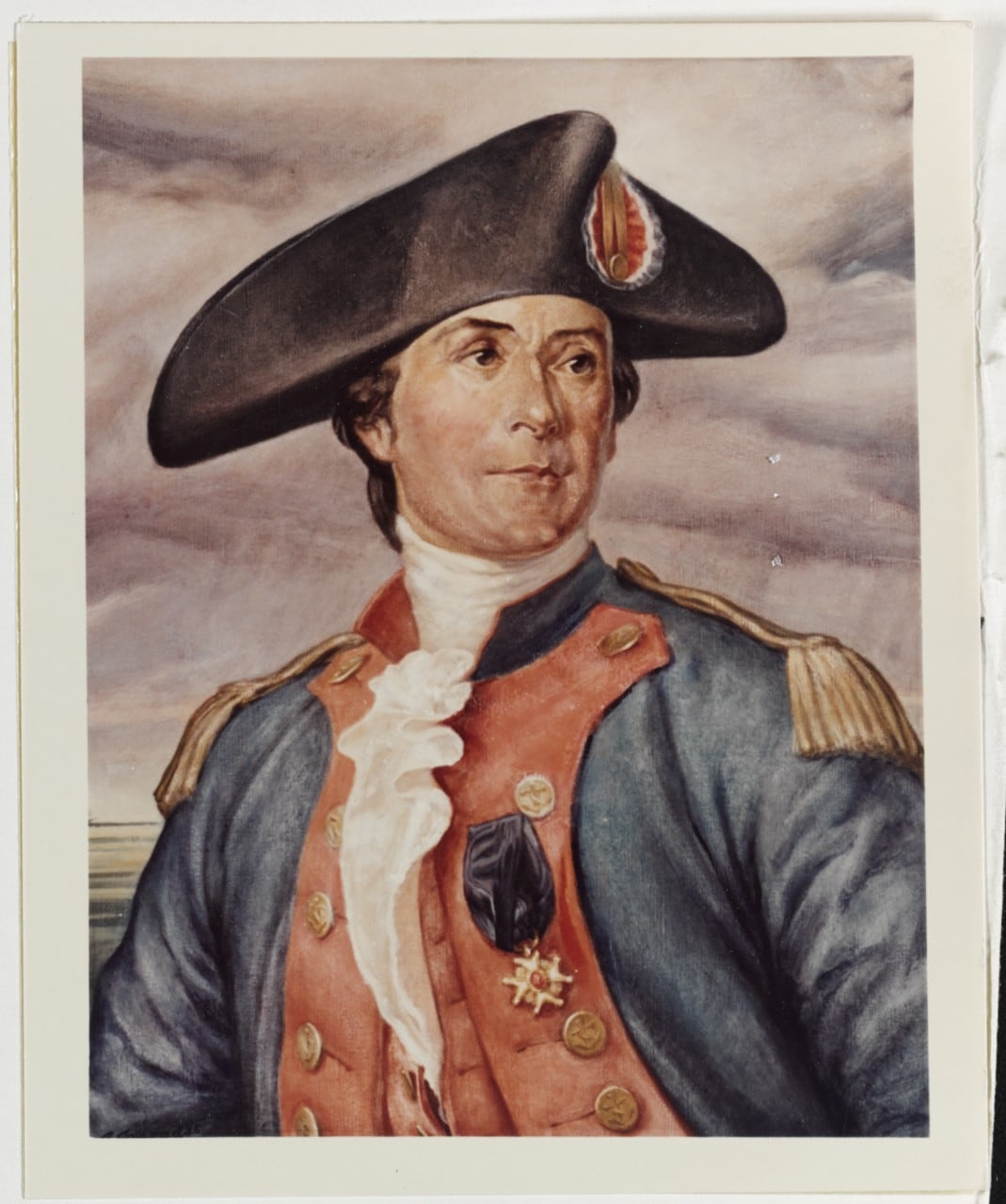
Evidence suggests that Jones grasped the concept of power projection early in his naval career.
In October 1776, less that a year after he became the first American naval officer to hoist his new nation’s flag aboard ship, he wrote to Robert Morris, an influential Congress member.
Jones had just returned from a successful deployment off the East Coast and Nova Scotia in his first command, the 10-gun sloop Providence.
The mission had been a modest example of naval power projection, but within the confines of the Continental Navy, a noteworthy one: He reported an impressive tally of 16 British brigantines, sloops and schooners captured or destroyed. He also had conducted successful raids against Canso and other fishing harbors along the Nova Scotia coast.
Jones’ letter to Morris then turned to such broad issues as naval recruiting and retention. He capped this passage with a forward-thinking admonition that went far beyond his own command challenges on Providence: “And without a respectable Navy — alas America!”
While others were focused on immediate needs, Jones was suggesting a relationship between America’s naval power and its future as a nation.
His letter also addressed the quality of the officer corps and the future organizational structure of the Navy:
We have had proof that a Navy may be officered almost on any terms, but we are not sure that these officers are equal to their commissions; nor will the Congress ever obtain such certainty, until they, in their wisdom, see proper to appoint a board of admiralty, competent to determine impartially the respective merits and abilities of their officers and to superintend, regulate and point out all the motions and operations of the Navy.
This was unusually farsighted but politically risky advice from a Continental Navy captain to his civilian overseers. Jones was, in effect, telling Congress how to run its business, the kind of sweeping, gratuitous advice political leaders generally do not welcome from Navy captains.
But Jones persisted. In his role as a highly credible “voice from the fleet,” he was almost as important to his country as he was as a combat leader.
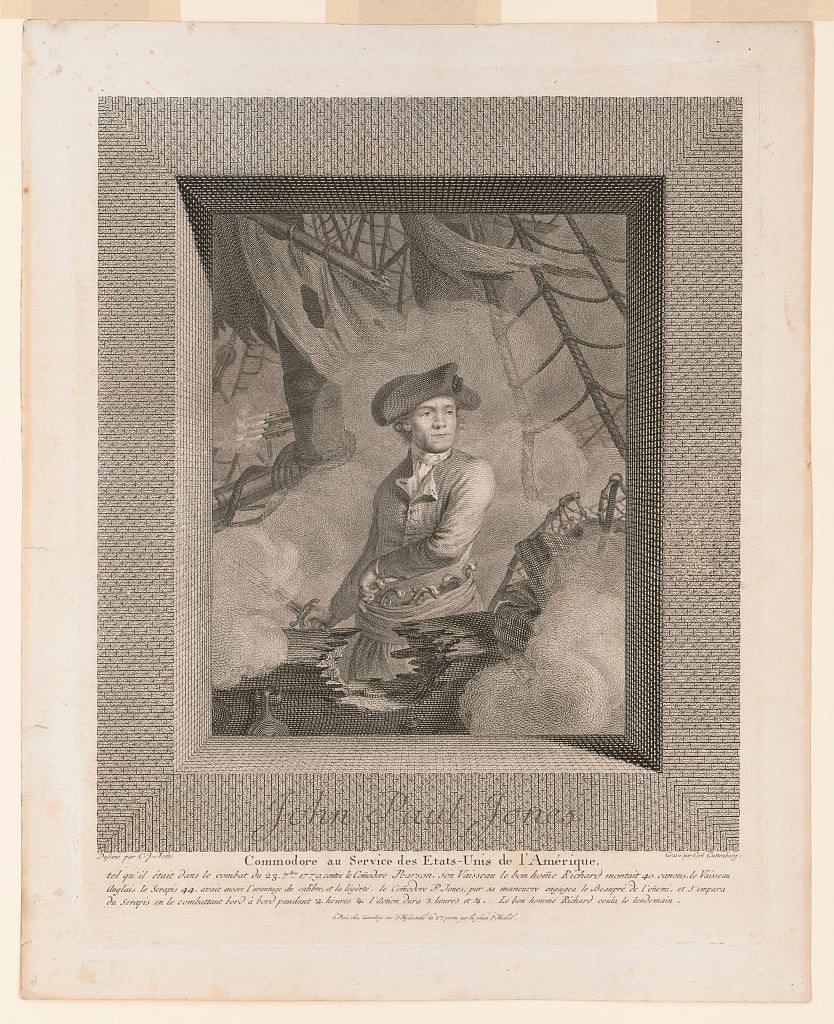
Toward the end of the letter, Jones wrote of his rumored next command aboard the 14-gun brig Andrea Doria and proposed that he lead a small squadron to the west coast of Africa. Once there, he would attack British commerce and “give a blow to the English African trade, which would not soon be recovered, by not leaving them a mast standing along the coast.”
Jones’ suggestion of a far-forward deployment to Africa was surprisingly audacious given the inability of the nascent Continental Navy even to keep American ports open. But it demonstrated brilliant insight on the potential strategic impact of a naval squadron led abroad by a skilled and bold officer to strike an enemy at vulnerable points.
This kind of forward-leaning mission, based on mobile and flexible units, has resurfaced in modern applications of maneuver warfare at sea.
In the 1980s, for example, naval strategists proposed formation of “surface action groups” based on the East and West Coasts of the U.S. Such squadrons, which never got beyond conceptual stages, were to be built around Iowa-class battleships or guided-missile cruisers and deployed to hot spots worldwide when force below the tactical capabilities of a carrier battle group was required.
In a broader and more up-to-date context, the Navy’s recently published A Cooperative Strategy for 21st Century Seapower describes six core capabilities, the first of which is forward presence and another of which is power projection. The two combine to bring naval power to bear against an enemy.
Unfortunately for Jones, the lack of resources and Congress members’ limited sense of the Navy’s strategic potential meant there would be no mission to Africa. Instead, Jones and Andrea Doria were given a mission similar to the one he had carried out on Providence.
But the concept of forward projection would reemerge soon enough at a crucial stage of the American War of Independence.
In 1778–79 Jones undertook two deployments that dramatically demonstrated his understanding of the effectiveness of forward projection. Historians commonly view these missions — one in the 18-gun sloop-of-war Ranger and the other in the 40-gun frigate Bonhomme Richard — as freestanding events.
In hindsight, however, these modest strikes enabled Jones to get inside the British decision cycle. As such, they became a key element in a three-part American naval strategy.
The two other elements were widespread use of American privateers against British maritime commerce and the seizure of domestic naval control by the French fleet of Rear Adm. François Joseph Paul, compte de Grasse, at the Battle of the Virginia Capes on Sept. 5, 1781.
The former hiked he British cost to pursue the American Revolution while providing America with a source of desperately needed materiel.
The latter sealed Lt.. Gen. Lord Charles Cornwallis’ fate at the Battle of Yorktown.
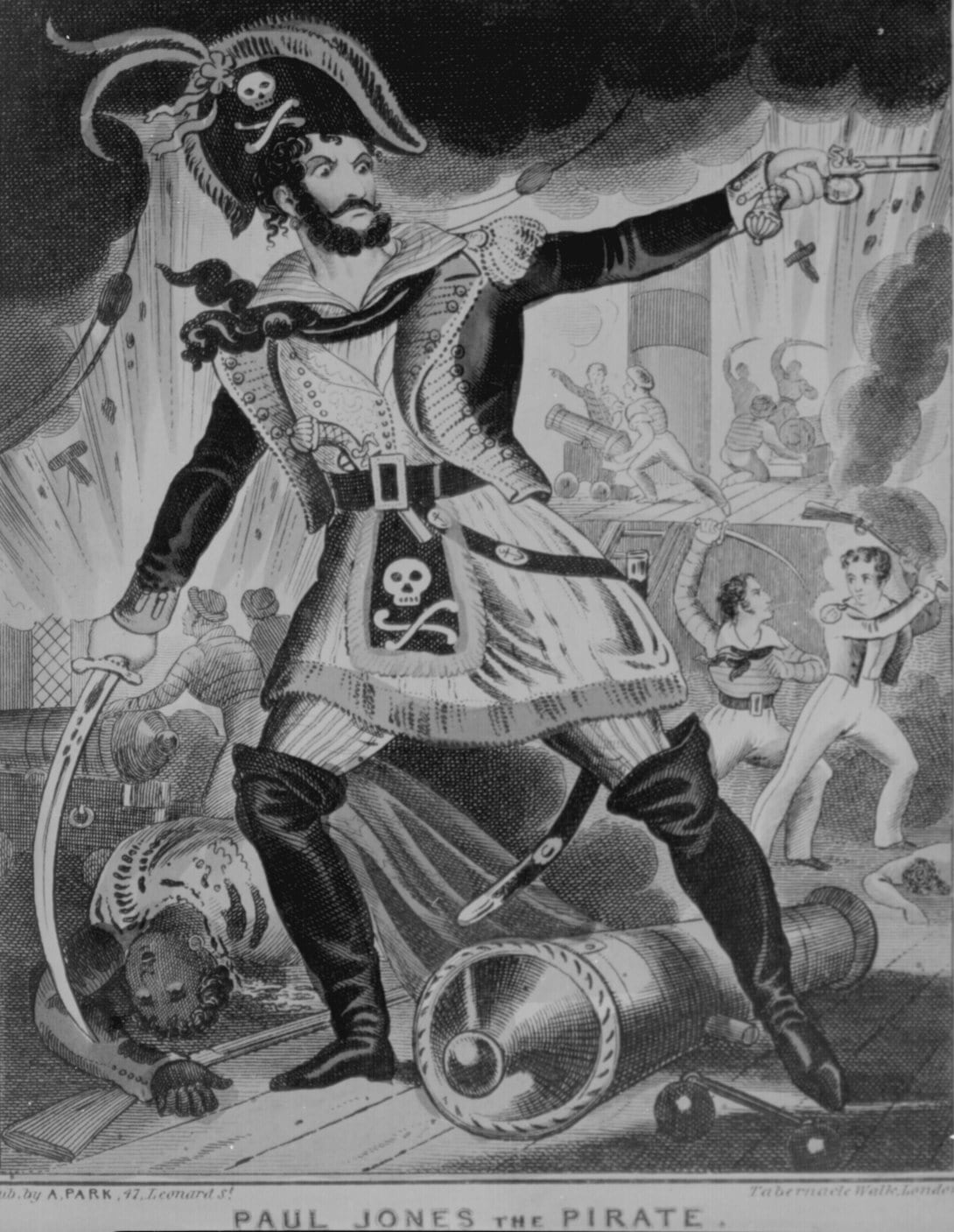
For several weeks in April and May 1778, Jones commanded Ranger independently, mostly in the Irish Sea.
His first major engagement was a raid on the British port of Whitehaven on April 22 and 23. It was hardly a textbook operation in the annals of expeditionary warfare: Jones had to persuade his crew to even attempt the mission, and his first and second lieutenants refused to join the landing parties.
Ultimately, Jones was able to muster 30 men to join him in the boats. Just then the wind dropped, delaying the assault and eliminating the element of surprise. Fortunately for Jones, there were no real local defenses, and he managed to land a small force, spike the guns guarding the harbor approach and set fire to a collier tied up at its pier.
From Whitehaven, Jones sailed to nearby St. Mary’s Isle, where he hoped to kidnap the Earl of Selkirk and trade him for imprisoned Continental Navy sailors. The earl was absent, however, and the raid took on comic proportions when some in the landing party persisted in looting silver plate from Selkirk’s manor.
The lapse in Jones’ leadership embarrassed him and compromised efforts to establish a professional standing for himself and the Continental Navy.
The next engagement, a single-ship action against the British sloop-of-war Drake, had a decidedly more positive outcome. The two ships met on April 24 off Belfast Harbor. Drake had a somewhat larger crew, but Ranger was heavier gunned, and when the smoke cleared, Jones had captured the British warship. He returned to France with the ship as a prize.
The raid on Whitehaven and subsequent defeat of a relatively small British warship were, on the surface, minor military events. There was, however, significant psychological value to Jones’ victories.
They contrasted sharply with the steady series of setbacks the Continental Navy had suffered as the Revolution progressed.
That the action took place within sight of the British shore was not lost on military, political and business leaders in London.
The Gazetteer and New Daily Advertiser published a Whitehaven resident’s reaction to Jones’ raid: “We are all in a bustle here from the late insolent attack of the provincial privateer’s men.”
The Morning Chronicle and London Advertiser reported, “Four companies of the militia are now here.”
American privateers had previously taken prizes in British waters, but the shock of a Continental Navy warship actually raiding an English port — it had been more than 100 years since the Dutch had come ashore and burned Sheerness in 1667— and then escaping with a captured British prize was substantial.
It was also a sign of worse things to come for the British.
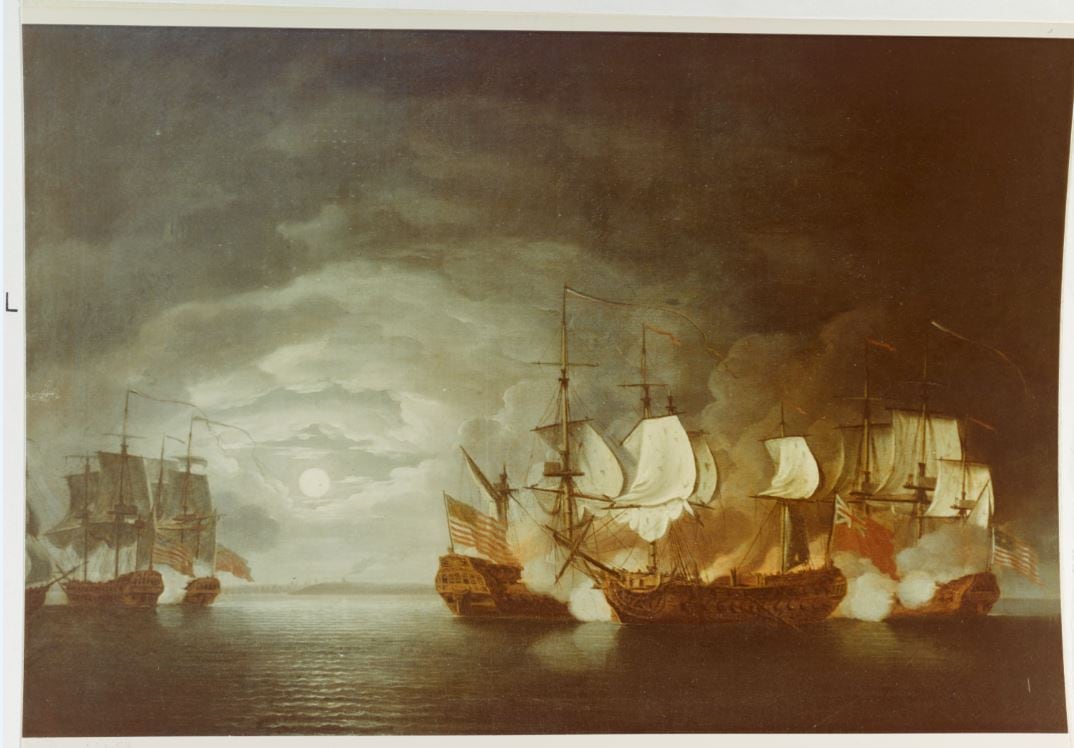
Jones’ deployment on Bonhomme Richard in 1779 was an expanded version of that on Ranger. He commanded a small squadron, and his flagship was a frigate, not a sloop-of-war.
The squadron included the new 36-gun frigate Alliance and three French ships: the 26-gun frigate Pallas, the 12-gun brig Vengeance and the 12-gun cutter le Cerf. The French ships were placed under Jones’ temporary command.
Bonhomme Richard, a converted East Indiaman provided by the French, was slow, and some of its armament was dangerously old. Alliance was newer but captained by Pierre Landais, a former French naval officer whom John Adams ridiculed as having an “embarrassed mind.”
Before the squadron left France, Jacques Donatien Le Ray de Chaumont, the French naval minister, induced Jones to sign an agreement allowing the French captains to ignore the American commodore if they felt his orders countered their best interests. Jones’ compliance was the price he paid for the donated ships and men.
By contrast, Jones’ own orders from Benjamin Franklin, the American ambassador to France, were extremely permissive, the best kind for an aggressive naval commander. Franklin simply directed Jones to circumnavigate the British Isles by sailing north along the west coasts of Ireland and the Hebrides, across the top of Scotland and then down the east coasts of Scotland and England “in order to take the enemy’s property in those seas.”
Jones sailed from Lorient on Aug. 14, 1779, and made landfall off the Irish coast on Aug. 23. For the next month, he preyed on British shipping and threatened coastal areas. As a result, the admiralty mobilized militias and dispatched naval units to hunt him down — resources disproportionate to Jones’ small squadron.
The deployment culminated on Sept. 23 with Jones’ bitterly fought single-ship engagement of Capt. Richard Pearson in the 44-gun British frigate Serapis. The battle took place within sight of Flamborough Head, off the Yorkshire coast.
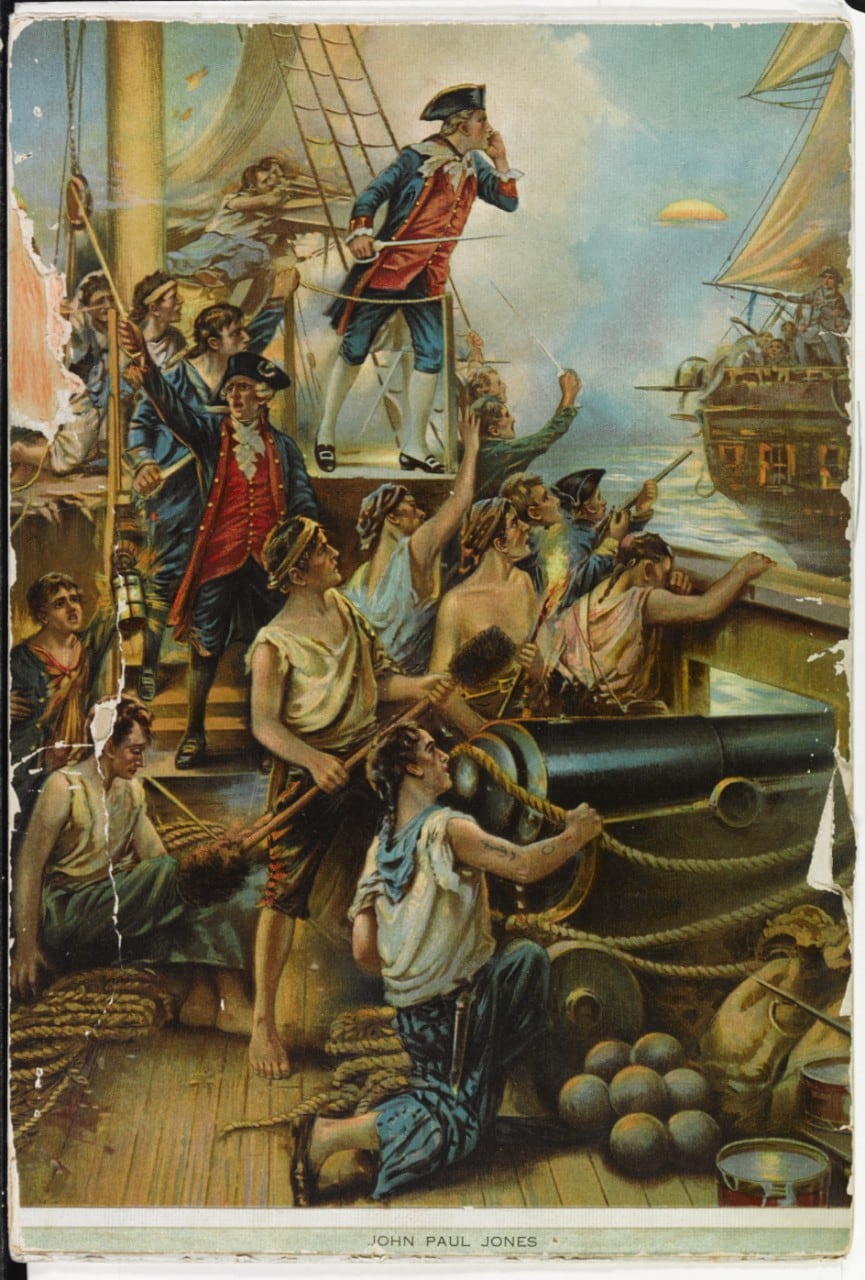
The action between Jones and Pearson, like most combat, didn’t follow expectations. Jones, in a 14-year-old merchantman, had no chance of outmaneuvering his adversary, in an agile, purpose-built warship. And British gunners were better drilled than the Americans.
The ships maneuvered in light airs and slowly closed. Suddenly, there was the flash and crack of a musket shot from Bonhomme Richard. As the sound ricocheted off Flamborough Head, both ships ran up their colors and fired broadsides.
Predictably, Serapis maneuvered around Bonhomme Richard, methodically inflicting heavy damage. As casualties aboard the American ship mounted, Pearson shouted to Jones, asking if he would strike his colors. Given the course of the battle to that point, it was a rational question.
Most contemporary accounts record his response as, “I may sink, but I’ll be damned if I strike!”
It later morphed into the phrase that has since echoed in U.S. naval history: “I have not yet begun to fight.”
Perhaps due to slight wind shifts or a few prescient maneuvers by Jones or overconfidence by Pearson, the ships came together twice.
The second time, Jones and his crew managed to hurl over grappling hooks, and the flow of battle shifted. Jones had embarked more Marines than usual, and they were effectively deployed in his ship’s tops and rigging. Their muskets and swivel guns swept Serapis’ exposed decks.
As the bloody struggle continued, a fortuitous — perhaps even chance — occurrence sealed Jones’ victory.
One of his crewmen was perched on a yardarm, dropping hand grenades on Serapis’ main deck, when one of his missiles sailed through an open hatch and detonated on the gun deck amid loose powder. The resulting explosions wiped out Serapis’ main armament, which had continued to fire pointblank in one side and out the other of Bonhomme Richard’s hull.
In a flaming instant, it was Pearson’s turn to contemplate surrender. He struck, and British citizens again witnessed an American victory at sea.
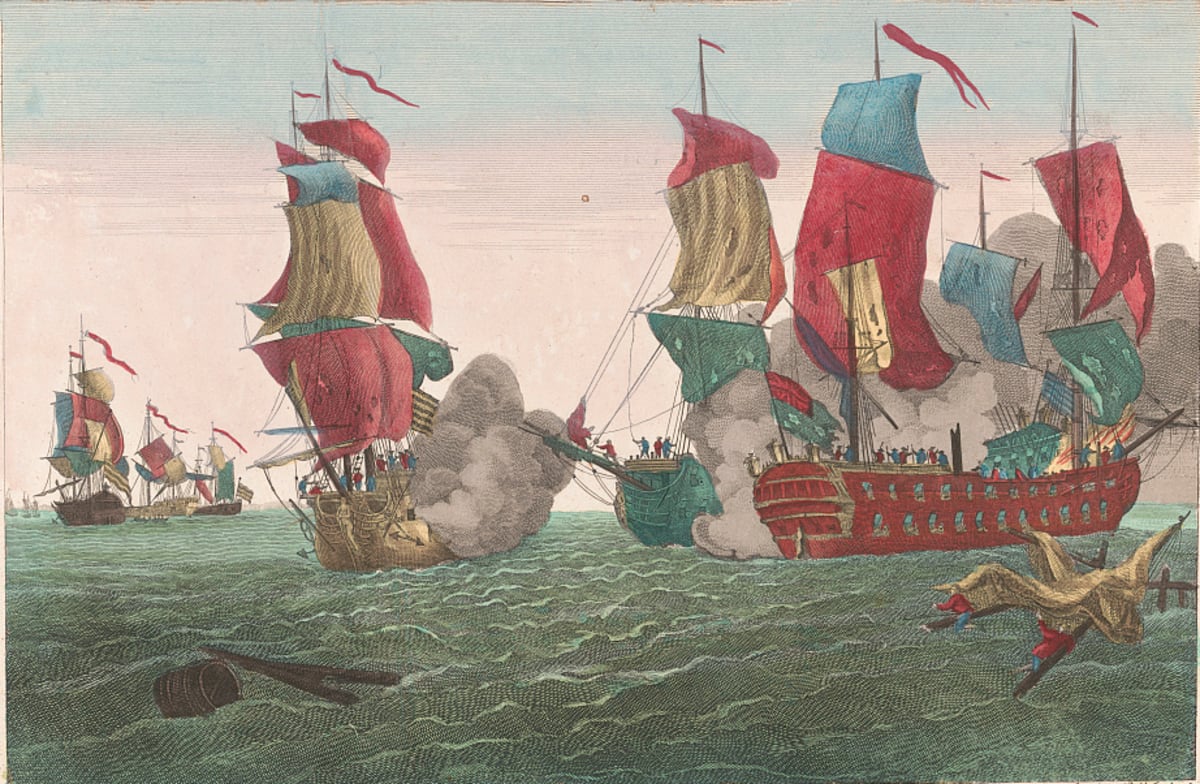
The shock rippled across America and Europe, particularly in London.
On Oct. 3, Jones and his squadron — minus Bonhomme Richard, which had sunk after its victory over Serapis — put in to the Dutch island port of Texel.
Jones had roiled the coasts of the British Isles, captured or destroyed British merchant ships and outfought a modern British frigate in single-ship combat, a victory that made him a hero in America and a celebrity in Paris and other European capitals.
Most important, Jones’ deployment was a tipping point at the admiralty and Whitehall in London, where there was increasing concern about a French invasion of Britain.
In naval terms, the Battle of Flamborough Head was what the Battle of Yorktown was to the land campaigns of the American Revolution: It shifted the paradigm.
The same unbreakable determination Jones exhibited in combat drove his dealings with civilian leaders, and as America grappled for its independence, he continued to push his forward thinking. In September 1782, he again wrote Robert Morris of the long-term future of the Navy. Morris was by then agent of marine in Congress and arguably the leading champion of young America’s naval policy.
Jones’ letter covered a range of subjects and began with a bit of wry humor: “The beginning of our Navy … has no precedent in history. Was it a proof of madness in the first corps of sea officers, at so critical a period, to have launched out on the ocean … to make war against such a power as Great Britain?”
Jones contrasted British and French naval tactics and assessed the difference between single-ship combat and fleet tactics. The letter also discussed a revised rank structure for officers, a signaling system for use in combat and a naval constitution that would govern the growing U.S. fleet afloat and ashore.
Toward the close of the letter, Jones suggested that America build a fleet of frigates and teach officers the principles of mathematics and mechanics at “little academies” both aboard the frigates and at shore stations. He added that officers should be “entitled to receive instruction gratis at those academies.”
It was the germ of an idea that would eventually be realized with the October 1845 founding of the Naval School, precursor to the U.S. Naval Academy, in Annapolis, Maryland.
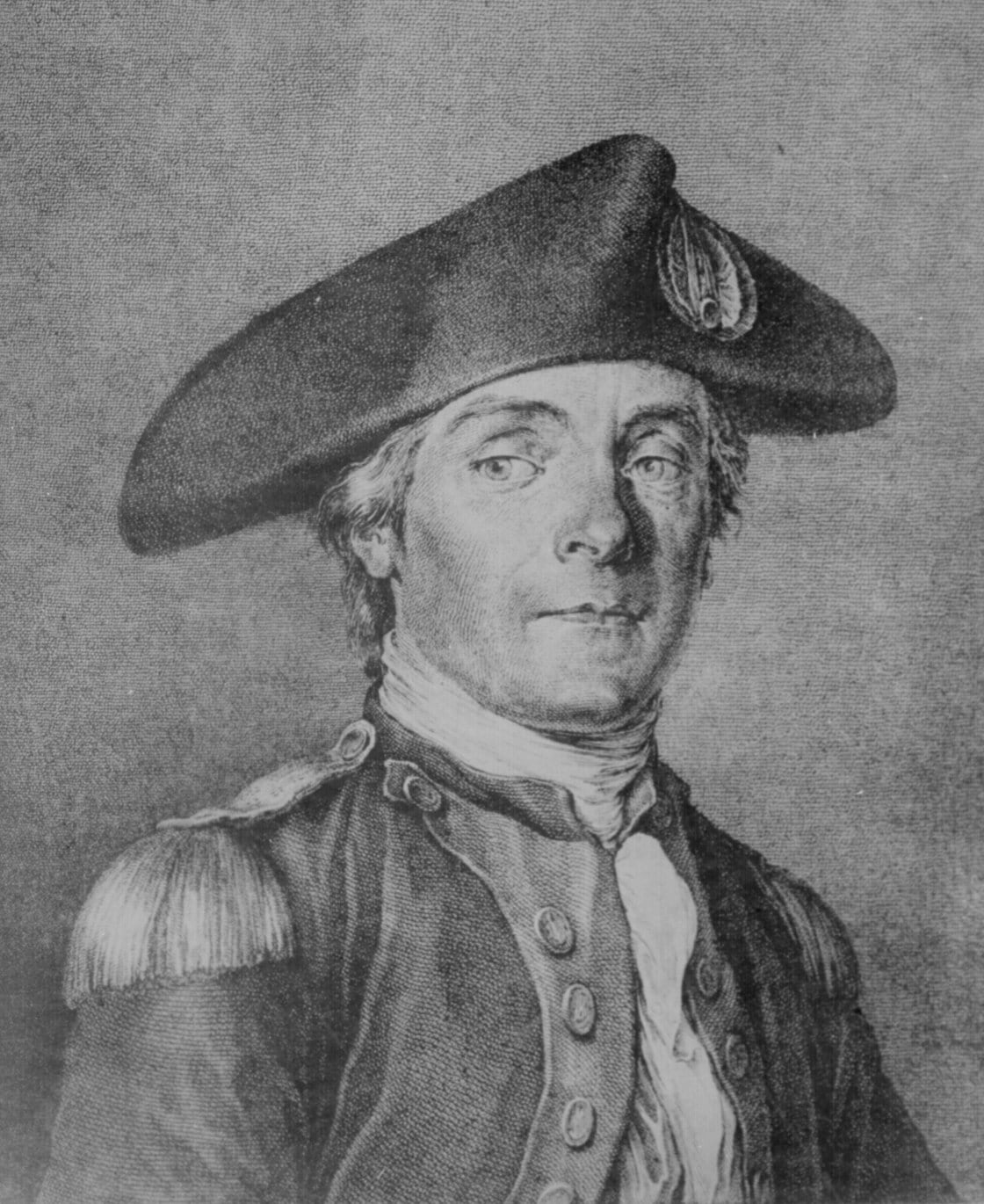
Jones also suggested that a single frigate in his command be sent to Europe under the U.S. flag to negotiate commercial and naval agreements. If such an expedition proved too expensive, Jones offered to travel to Europe as a passenger to pursue the agreements.
It was a visionary proposal for a new country struggling to emerge from the exigencies of war. Jones saw his suggestions realistically: “I am sensible it cannot be immediately adopted, and that we must first look about for ways and means; but the sooner it is adopted the better... . In time of peace it is necessary to prepare, and be always prepared, for war by sea.”
Unfortunately, the budget resources for the naval policy Jones outlined did not exist, nor was there broad acceptance of his vision of the role naval power would play in America’s future. In fact, in 1785 America entered a nine-year period when she had no Navy at all. That lack of ships in support of national interests would contribute significantly to the onset of the Quasi-War with France, the Barbary Wars and the War of 1812.
As Jones’ heroic image matured, many dubbed him “the Father of the U.S. Navy,” though Robert Morris, Joseph Hewes and even George Washington have a stronger claim to that title.
But if Jones — whose strategic sense of naval power was visionary and who continually lobbied for a professional Navy with global reach — does not qualify for fatherhood status, there is another title he can legitimately claim: First Sea Power Visionary.
Jones’ later years and 1792 death in Paris went remarkably unheralded.
He died alone, and a century later no one actually knew where he was buried — or seemed to care.
But the discovery of Jones’ remains in 1905 after a six-year search marked the beginning rather than end of his story, as historians rushed to discover the man behind the mythic combat hero of his 19th century biographers.
John Paul Jones’ bronze and marble crypt beneath the dome of the U.S. Naval Academy Chapel bears the following epitaph: HE GAVE OUR NAVY ITS EARLIEST TRADITIONS OF HEROISM AND VICTORY.
Only now do we realize that Jones also foresaw the critical role the U.S. Navy would play in our nation’s history.
RELATED

For further reading Joseph Callo recommends: John Paul Jones: A Sailor’s Biography, by Samuel Eliot Morison, and Sea of Glory: A Naval History of the American Revolution, by Nathan Miller.
This article originally appeared in the August 2008 issue of Military History, a sister publication of Navy Times. To subscribe, click here.
